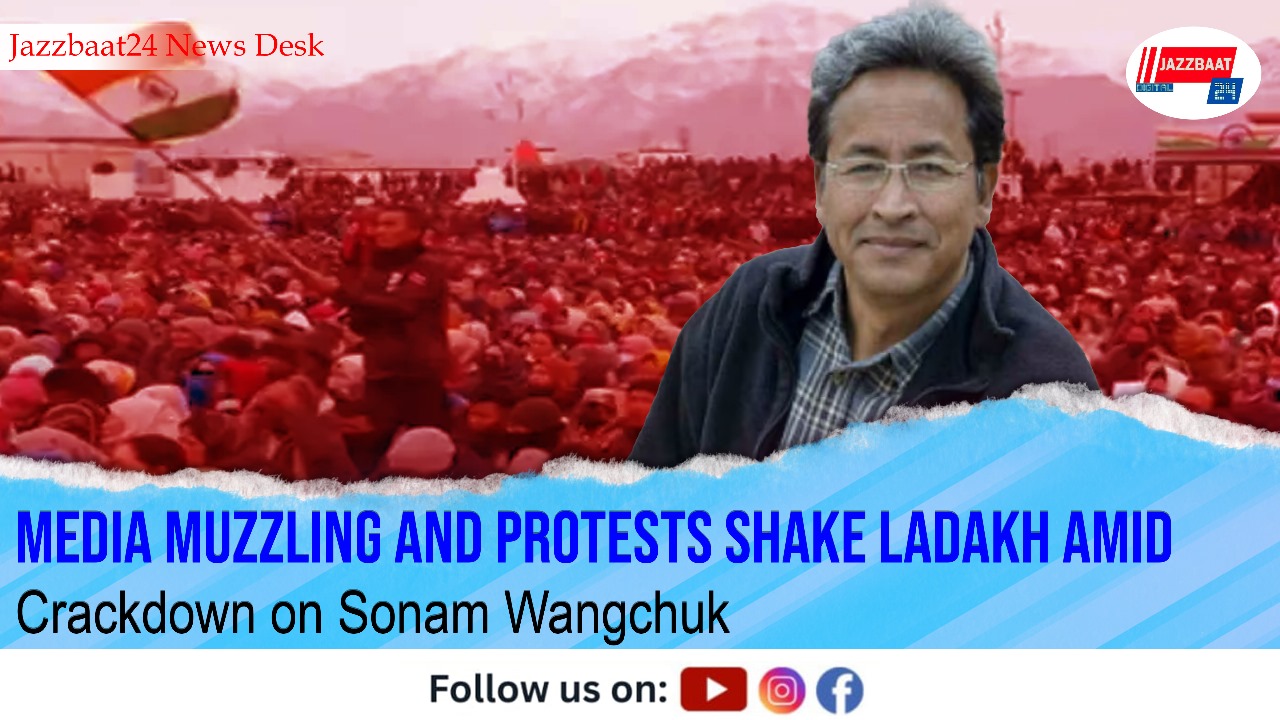
Tensions in Ladakh have surged following the arrest of education reformer Sonam Wangchuk under the National Security Act after a mass hunger strike demanding statehood and constitutional protections. The protest, led jointly by the Leh Apex Body and the Kargil Democratic Alliance, saw rare unity between the Buddhist-majority Leh and Muslim-dominated Kargil. The unrest turned violent on September 24 when police action left four dead and several injured, while a BJP office was torched in Leh.
Since then, the administration has moved swiftly to control the narrative. Internet services were suspended for weeks, local journalists were monitored, and restrictions were imposed on information flow. Government-run outlets such as Doordarshan News Ladakh maintained a propaganda-heavy line, while national TV networks branded protesters as anti-national. This media distortion has drawn comparisons to the narrative management seen after the abrogation of Article 370 in 2019.
Despite censorship, Ladakhi journalists and residents have found creative ways to share their stories online. Local reporters have used YouTube and broadband networks to present on-ground realities, while citizens launched symbolic protests like the Black Out movement, where households turned off lights to show solidarity. Wangchuk’s wife, Gitanjali Angmo, has been actively countering misinformation through videos defending his work and highlighting the progress of the Himalayan Institute of Alternatives in Leh.
The events in Ladakh reveal the growing frustration of its people over denied rights, lack of political representation, and environmental vulnerability. As the region faces repression and misrepresentation, local voices continue to push back, demanding recognition and dignity. The crisis underscores how media control and state suppression have turned Ladakh once seen as a peaceful frontier into a new flashpoint of democratic resistance in India’s northernmost region.